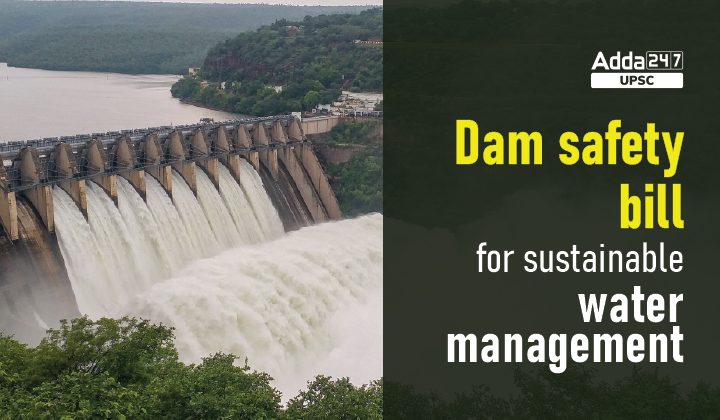Table of Contents
Dam Safety Bill for Sustainable Water Management- Relevance for UPSC Exam
General Studies II- Government Scheme/Policies, Statutory, Regulatory & Various Quasi-Judicial Bodies.
In News
The recent floods in the Mahanadi basin in Odisha have brought to the fore, the faulty management of dam safety, which were built to mitigate floods and not be the cause of them.
What is a dam?
- A dam is a barrier that stops the flow of water and results in the creation of a reservoir.
- Dams are mainly built-in order to produce hydroelectricity.
- Reservoirs created by dams not only suppress floods but also provide water for activities such as irrigation, human consumption, industrial use, aquaculture, and navigability.
What is the Dam Safety Act, 2021?
- The Act regulates the surveillance, inspection, operation and maintenance of dams to prevent disasters.
Features
- National Committee on Dam Safety (NCDS): It will be chaired by the chairperson, Central Water Commission.
- Its functions will include formulating policies and regulations regarding dam safety standards and prevention of dam failures, analyzing the causes of major dam failures, and suggesting changes in dam safety practices.
- National Dam Safety Authority (NDSA): It will be headed by an officer, not below the rank of an Additional Secretary, to be appointed by the central government.
- The main task of this authority includes implementing the policies formulated by the NCD, resolving issues between State Dam Safety Organizations (SDSOs), or between an SDSO and any dam owner in that state, specifying regulations for inspection and investigation of dams.
- State Dam Safety Organization (SDSO): Its functions will be to keep perpetual surveillance, inspection, monitoring the operation and maintenance of dams, keeping a database of all dams, and recommending safety measures to owners of dams.
- Dam Safety Unit: The owners of the specified dams are required to provide a dam safety unit in each dam.
- This unit will inspect the dams before and after the monsoon session, and during and after any calamity or sign of distress.
- Emergency Action Plan: Dam owners will be required to prepare an emergency action plan, and carry out risk assessment studies for each dam at specified regular intervals.
- Certain offences: The act provides for two types of offences – obstructing a person in the discharge of his functions, and refusing to comply with directions issued under the proposed law.
Dam Rehabilitation and Improvement Programme (DRIP)
- Government of India, with financial assistance from the World Bank started Dam Rehabilitation and Improvement Project (DRIP) in April 2012 with an aim to improve the safety and operational performance of selected existing dams along with dam safety institutional strengthening with system wide management approach.
Conclusion
- The bill aims to help all States and Union Territories to adopt uniform dam safety procedures which will ensure safety of dams and safeguard benefits from such dams.
- In order to iron out the differences and issues in the bill, central government should take the state governments into consideration.
- This will go a long way in ensuring the safety of dams in India, which ranks third in the world in terms of number of large dams.




 TSPSC Group 1 Question Paper 2024, Downl...
TSPSC Group 1 Question Paper 2024, Downl...
 TSPSC Group 1 Answer key 2024 Out, Downl...
TSPSC Group 1 Answer key 2024 Out, Downl...
 UPSC Prelims 2024 Question Paper, Downlo...
UPSC Prelims 2024 Question Paper, Downlo...





